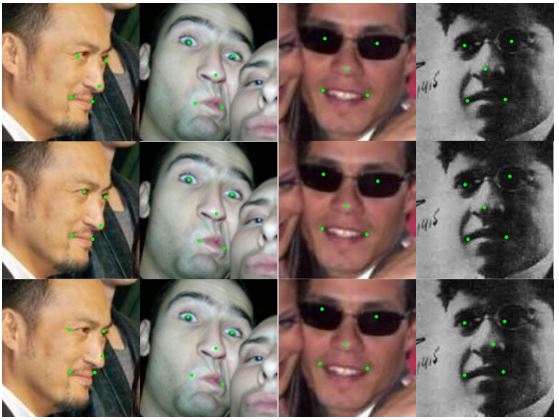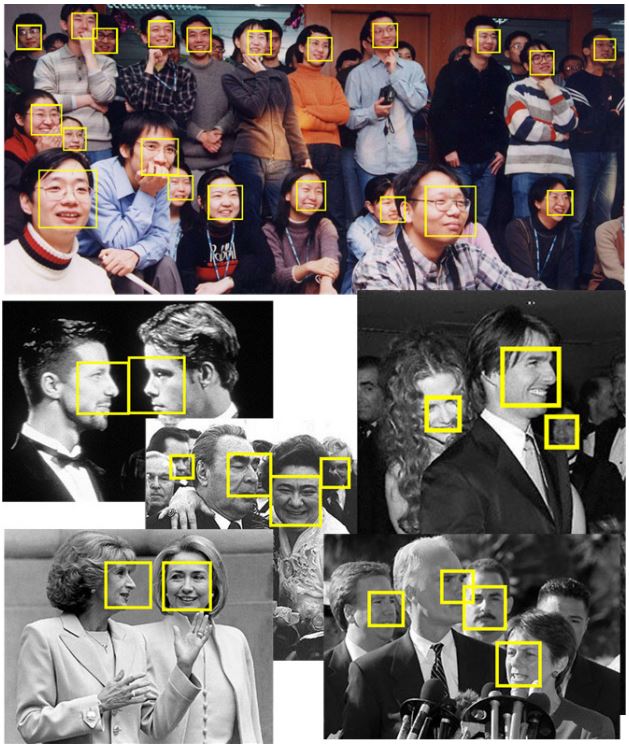Face detection is to determine the locations and sizes of human faces in arbitrary images. Face detection has attracted much attention all the time, since it has many potential applications in computer vision, such as biometrics, video surveillance, human computer interface, and autofocus. Especially, face detection is an important part of face recognition as the first step of automatic face recognition. However, face detection is not straightforward because it has lots of variations of image appearance, like pose variation, occlusion, image orientation, illumination and facial expression. Our task is to design and develop different methods to resolve these problems.
Highlights

Deep Convolutional Network Cascade for Facial Point Detection.
Y. Sun, X. Wang and X. Tang. In Proceedings of IEEE Conference on Computer Vision and Pattern Recognition (Poster, CVPR 2013)
We propose a new approach for estimation of the positions of facial keypoints with three-level carefully designed convolutional networks. At each level, the outputs of multiple networks are fused for robust and accurate estimation. Thanks to the deep structures of convolutional networks, global high-level features are extracted over the whole face region at the initialization stage, which help to locate high accuracy keypoints. There are two folds of advantage for this. First, the texture context information over the entire face is utilized to locate each keypoint. Second, since the networks are trained to predict all the keypoints simultaneously, the geometric constraints among keypoints are implicitly encoded. The method therefore can avoid local minimum caused by ambiguity and data corruption in difficult image samples due to occlusions, large pose variations, and extreme lightings. The networks at the following two levels are trained to locally refine initial predictions and their inputs are limited to small regions around the initial predictions. Several network structures critical for accurate and robust facial point detection are investigated. Extensive experiments show that our approach outperforms state-ofthe-art methods in both detection accuracy and reliability.

Dynamic Cascades for Face Detection.
R. Xiao, H. Zhu, H. Sun and X. Tang. In Proceedings of International Conference on Computer Vision (Poster, ICCV 2007)
In this paper, we propose a novel method, called “Dynamic Cascade”, for training an efficient face detector on massive data sets. There are three key contributions. The first is a new cascade algorithm called “Dynamic Cascade”, which can train cascade classifiers on massive data sets and only requires a small number of training parameters. The second is the introduction of a new kind of weak classifier, called “Bayesian Stump”, for training boost classifiers. It produces more stable boost classifiers with fewer features. Moreover, we propose a strategy for using our dynamic cascade algorithm with multiple sets of features to further improve the detection performance without significant increase in the detector’s computational cost. Experimental results show that all the new techniques effectively improve the detection performance. Finally, we provide the first large standard data set for face detection, so that future researches on the topic can be compared on the same training and testing set.